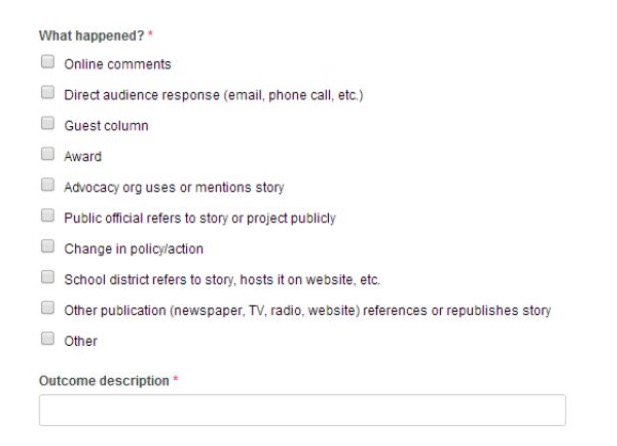News organizations are always looking for ways to engage with their readers, and a report out Monday from the American Press Institute offers some best practices for including audience members in reporting and creating communities around the news. The report was written by Monica Guzman, a current Nieman Fellow and Seattle-based columnist.
“This study describes in detail how newsrooms and independent journalists can grow their readership, boost their relevance and find new sources of revenue by listening to and learning from their audiences,” Guzman writes. Here are five specific tips she offers:
To best reach a community of readers, news organizations need to figure out a few things: who they want to reach, what they’re trying to learn, what kind of participation they want from the audience, and where they’ll go to connect.
Journalists also need to decide the point in the reporting process at which they want to reach out to various communities. Guzman shared a chart drawn by journalism professor Joy Mayer, which illustrates how The Guardian approaches community involvement :

News organizations don’t want to involve the public too soon, and they also need to ensure they’re explaining complicated issues clearly and effectively:
[D]on’t be too quiet: Private, limited audience outreach to the right communities can still add value to your reporting as you’re doing it, particularly as you’re gathering accounts or looking for interview subjects. Even a broad callout on social media networks, carefully worded if necessary, can bring unexpected sources if your network trusts you enough to point them your way.
News organizations need to make appropriate requests. Outlets must ask good questions, make it easy and rewarding for users to contribute, and then actually use the material that they gather from the audience. For example, Code for America instructs its staff to “make sure what you are asking people to do will actually add value to your work. Otherwise, you won’t use it and people will feel discouraged”:
You don’t need to incorporate all the material your community contributes. But if you don’t use any material, use it dismissively, or, in the case of a conversation, spark what ends up being a dull or toxic dialogue, you’ll have limited the benefits of your engagement. You’ll have gained little, and the people who responded to your request will have not felt their contributions made a difference. They may hesitate to collaborate with you again.
Journalists need to do more than just ask readers to help them. It can be beneficial to find relevant community members who will help spread word about the reporting and give it credence:
When these influencers participate and share your project early on, word of what you’re doing spreads more quickly and more people who respect those people are likely to participate. You’ll also gather stronger material for a more relatable story that more people will want to share. For that reason, it’s worth spending the time it takes to reach influencers directly and ask them to weigh in — whether you connect by phone, email, or a simple ping on social media — and to build relationships with them that support your future work.
Beyond influencers, journalists should engage with the larger community. An Engaging News Project study found that uncivil comments fell by 15 percent when a reporter participated in the comment thread. Guzman suggests journalists respond, encourage, and guide conversations. Each of these steps takes different amounts of work and skill, but journalists should “think of them as the beginner, intermediate, and advanced ways to strengthen interaction by participating in public conversations.”
Acknowledge contributors, let them know when the story is published, and invite them to continue participating in future reporting projects:
To build cumulative connections with the people who contributed to your work…you need to show them that their involvement was valuable, and that there is more that you all can come together to do.
After a story is published, outlets need to determine the best way to measure its impact. When you’re dealing with community involvement, there’s no one best way to track success. As a result, each news organization should decide on the specific metrics it wants to focus on:
Guzman cited The Seattle Times Education Lab as an example. After stories are published, reporters and editors complete reports that detail how their coverage is impacting public discourse. The reports are entered in a database and are used to improve the Lab’s future coverage.[T]racking the impact of your engagement efforts is a big step toward improving them. The trick is to select meaningful metrics that track your specific goals, and to make informed decisions about how you’ll interpret them. Fail to be proactive in deciding what metrics matter, and your staff may default to overvaluing broad metrics like social follower counts and page views while undervaluing incremental progress in building community support.

“On those reports, staffers note whether stories resulted in such community responses as notable online comments, calls or emails from readers, changes in policy or mentions of the story by education advocacy organizations or the school districts,” Guzman wrote.
The full report is available here.